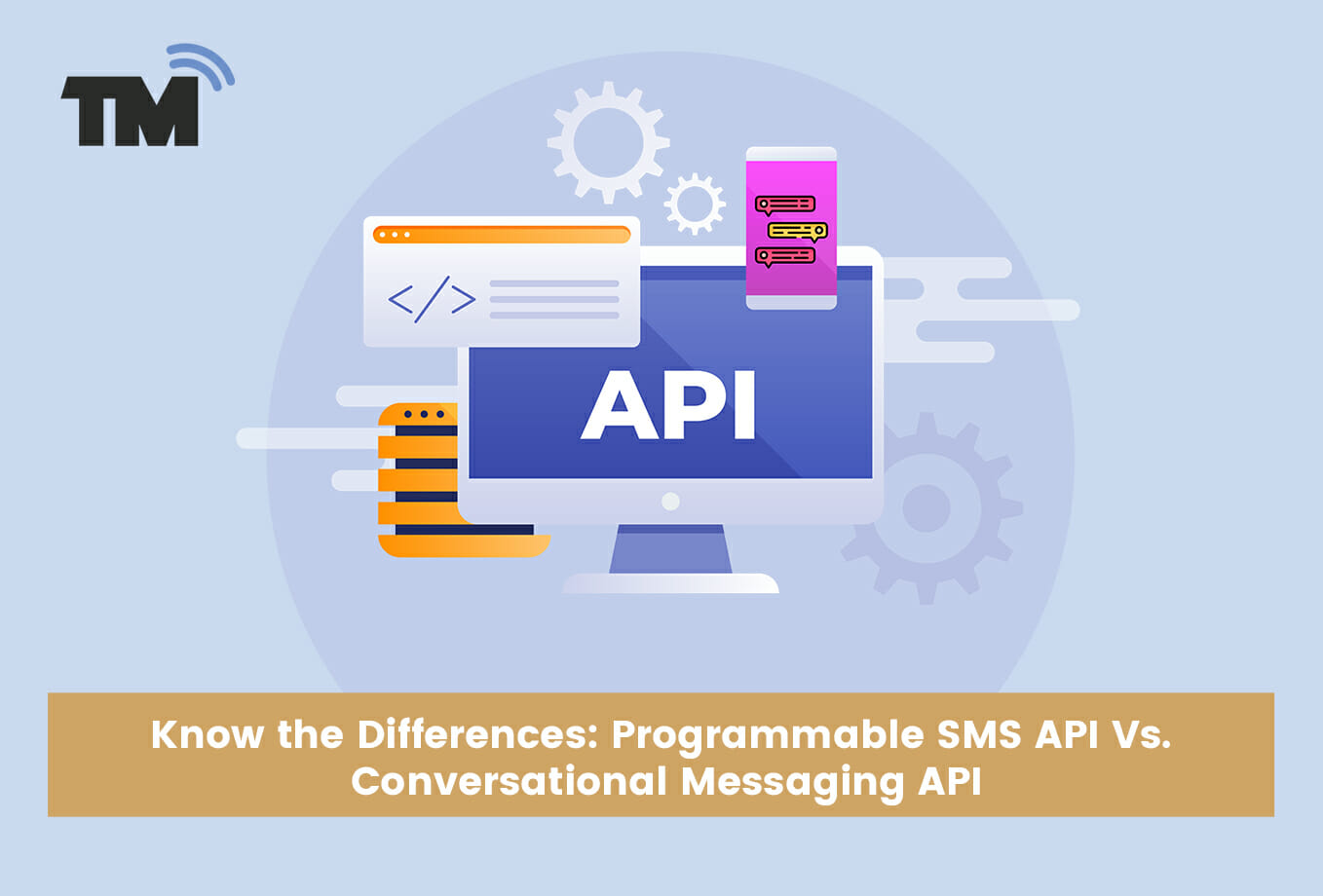Know the Differences: Programmable SMS API Vs. Conversational Messaging API
The marketing world is ripe with new techniques and styles of promotions. However, SMS marketing will be evergreen and yielding in the crowd, thanks to its 98% open rate. But you might have heard of 2 variations of text marketing.
Programmable SMS API and conversational messaging API are two types of APIs used for sending and receiving messages in the context of software applications. What you should opt for depends on your business need. To conclude, let’s help you break down the complex jargon into simple words.
Programmable SMS APIs Vs. Conversational Messaging APIs
- Programmable SMS APIs
Programmable SMS APIs are used to send and receive standard text messages (SMS) programmatically. These APIs enable developers to integrate SMS functionality into their applications, allowing them to send automated messages to customers, employees, vendors, and other stakeholders. Programmable SMS APIs typically provide features like message queuing, message templates, message status tracking, and the ability to send messages to multiple recipients (sometimes in thousands) at once.
Programmable SMS APIs are a set of tools that allow developers to integrate SMS (Short Message Service) capabilities into their applications or websites. These APIs enable developers to programmatically send and receive SMS messages, as well as automate workflows and manage messaging campaigns.
The application of Programmable SMS APIs is more suitable for sending reminders, transactional alerts, status updates, one-time passwords, and temporary web tokens. Also, programmable messaging API is best suited for mass communication. Hence, used in bulk messaging.
Example
Let’s say you’re building an e-commerce website that enables customers to track orders via text messages. You can use a programmable SMS API to send a confirmation message to the customer once they place an order. After that, you can send updates about the order’s status as it’s being processed, shipped, and delivered.
This same API can handle transactional messages and OTPs for the user with robust security.
- Conversational Messaging APIs
Conversational messaging APIs, on the other hand, are used to create more interactive messaging experiences. These APIs enable developers to build conversational interfaces that can understand, process, and respond to natural language inputs from your users. Such APIs typically provide features like natural language processing, sentiment analysis, chatbot integration, and the ability to handle complex conversational flows while retaining personalized communication.
These APIs enable businesses to build more complex and interactive messaging experiences with their customers. They allow developers to create chatbots, voice assistants, and other conversational interfaces that can understand natural language and respond accordingly.
Conversational messaging APIs facilitate real-time conversation between a brand and its audience across multiple channels. Hence best suited for a use case like customer care and support process.
Since you can do a lot of wonders using artificial intelligence and NLP (natural language processing) in this API, voice bots and chatbots do great with customer support.
Example
Picture this. You’re building a customer service chatbot for a telecom company. With a conversational messaging API like Dialogflow, you can build a chatbot that can understand natural language queries and provide relevant responses. Using its enhanced capabilities, you can even render multilingual support other than English.
For instance, a customer types, “I want to upgrade my telecom plan.” The chatbot can respond to the user with options for various plans available with the telecom brand and suggest an apt plan after comparing prices, benefits, and features. It can also guide them through the upgrade process.
In summary, Programmable SMS APIs are focused on enabling basic text messaging capabilities, while Conversational Messaging APIs enable businesses to build more complex and interactive messaging experiences with their customers.
How Textmunication Can Help with a Texting API
Textmunication can help you with both APIs. Based on your business need, we can offer Programmable SMS APIs focused on sending and receiving standard text messages. Or conversational messaging APIs focused on creating more interactive messaging experiences that can understand and respond to the natural language inputs of your users.
85% of your users prefer SMS interaction over an email or voicemail. Then why not engage with them through their preferred channel and drive more engagement? If you haven’t smitten yourself with the magic of SMS marketing and communication yet, know that you’re missing out on a huge opportunity. But it’s still not late. Get your 30-day trial now without any liability.

